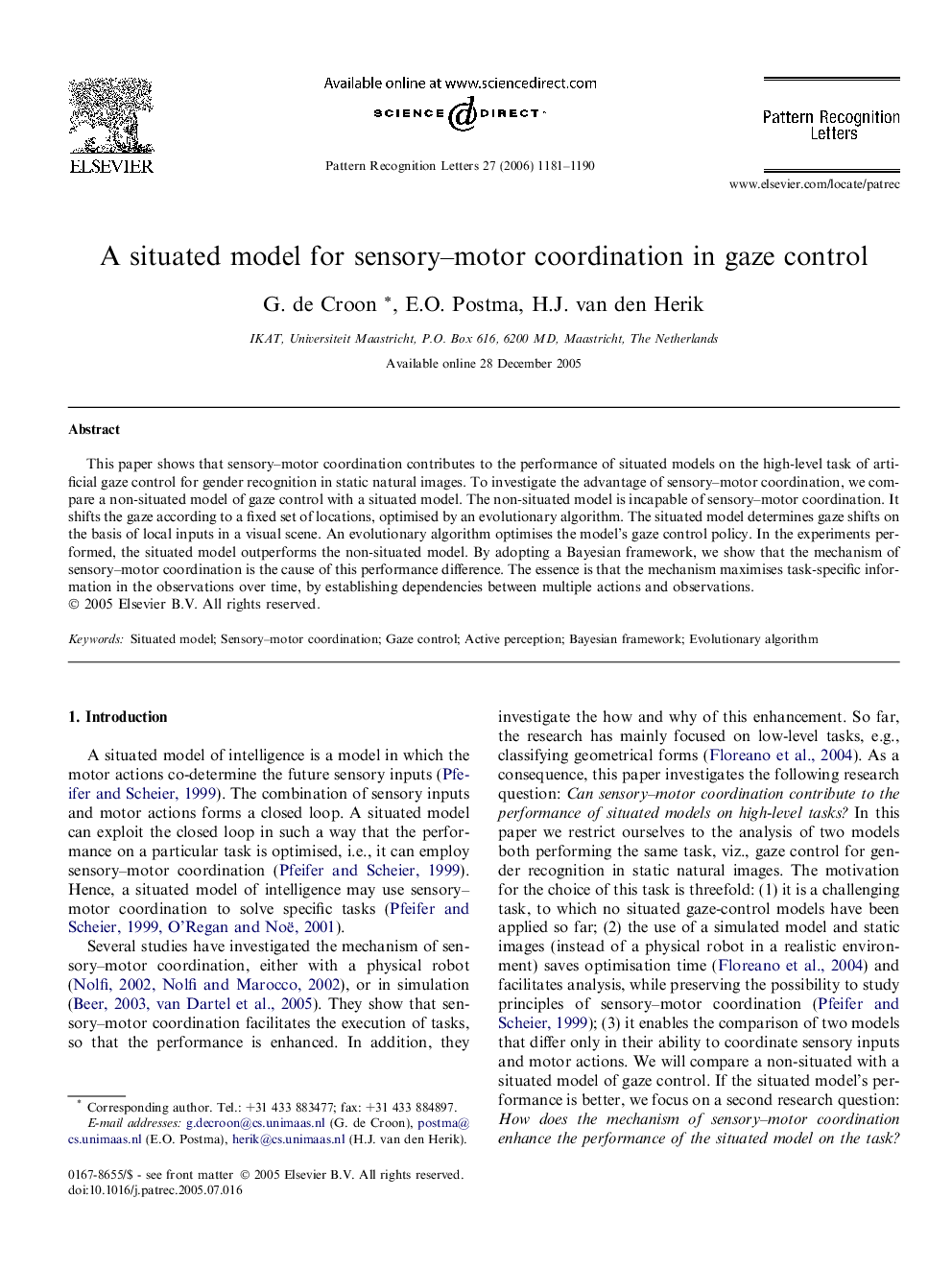| کد مقاله | کد نشریه | سال انتشار | مقاله انگلیسی | نسخه تمام متن |
|---|---|---|---|---|
| 535733 | 870370 | 2006 | 10 صفحه PDF | دانلود رایگان |

This paper shows that sensory–motor coordination contributes to the performance of situated models on the high-level task of artificial gaze control for gender recognition in static natural images. To investigate the advantage of sensory–motor coordination, we compare a non-situated model of gaze control with a situated model. The non-situated model is incapable of sensory–motor coordination. It shifts the gaze according to a fixed set of locations, optimised by an evolutionary algorithm. The situated model determines gaze shifts on the basis of local inputs in a visual scene. An evolutionary algorithm optimises the model’s gaze control policy. In the experiments performed, the situated model outperforms the non-situated model. By adopting a Bayesian framework, we show that the mechanism of sensory–motor coordination is the cause of this performance difference. The essence is that the mechanism maximises task-specific information in the observations over time, by establishing dependencies between multiple actions and observations.
Journal: Pattern Recognition Letters - Volume 27, Issue 11, August 2006, Pages 1181–1190